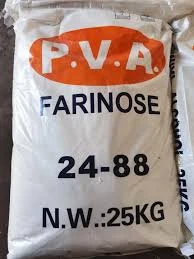Understanding HPMC A Versatile Product for Sale
Hydroxypropyl Methylcellulose (HPMC) is a white, odorless, and non-toxic powder derived from cellulose, which is a natural polymer. Known for its versatility, HPMC has gained widespread recognition across various industries due to its unique properties, making it an essential additive in numerous applications. This article will delve into the characteristics, uses, and market availability of HPMC, particularly focusing on its offerings for sale.
What is HPMC?
HPMC is produced by reacting cellulose with propylene oxide and methyl chloride. This process modifies the cellulose structure, leading to enhanced solubility and thermal stability. As a cellulose derivative, HPMC possesses unique functional properties, including water retention, emulsification, thickening, and binding qualities. These attributes make HPMC a valuable ingredient in various formulations, ranging from pharmaceuticals to food products and construction materials.
Applications of HPMC
1. Pharmaceuticals In the pharmaceutical industry, HPMC is widely used as a binder in tablet formulations, ensuring the active ingredients adhere together effectively. It is also utilized as a thickening agent in liquid medications and eye drops, providing stability and improved viscosity. Furthermore, HPMC can serve as a film-forming agent in controlled-release drug applications, improving the bioavailability of active compounds.
2. Food Industry HPMC’s compatibility with food applications has made it a popular ingredient in various food products. It acts as a thickening agent and stabilizer, enhancing the texture and consistency of sauces, dressings, and dairy products. Additionally, HPMC is used in gluten-free formulations, helping to simulate the elasticity and structure typically provided by gluten.
hpmc for sale

3. Construction HPMC has found significant applications in the construction industry as an additive in cement-based materials. It improves workability, enhances water retention, and increases adhesion in mortar and plaster, contributing to the durability and performance of construction materials. By using HPMC, builders can achieve smoother application and extended open time, allowing for better handling during construction processes.
4. Cosmetics and Personal Care In cosmetics, HPMC is incorporated into lotions, creams, and gels. Its thickening properties help achieve the desired consistency, while its film-forming capabilities contribute to the longevity of products on the skin. HPMC also acts as a stabilizer in emulsions, ensuring that formulations maintain their intended texture and effectiveness.
Market Availability
With the increasing demand for versatile additives like HPMC, numerous suppliers offer HPMC for sale across different markets. Buyers can find HPMC in various grades, tailored for specific applications. Suppliers typically provide detailed specifications, including viscosity, particle size, and water solubility, allowing customers to choose the appropriate grade for their requirements.
Online platforms, chemical supply companies, and specialty ingredient distributors are key sources for purchasing HPMC. When considering a supplier, it’s essential to ensure they provide quality certifications and meet industry standards, particularly for food and pharmaceutical applications.
Conclusion
HPMC stands out as a multifunctional ingredient with a broad range of applications across multiple industries. Its significance in pharmaceuticals, food, construction, and cosmetics highlights its versatility and value in enhancing product performance. As the market for HPMC continues to grow, it offers myriad opportunities for businesses seeking reliable and effective additives. Whether you're looking for HPMC for pharmaceutical formulations, food products, construction materials, or cosmetic applications, the widespread availability of this cellulose derivative ensures that you can find the right product to meet your needs. By understanding its properties and applications, businesses can leverage HPMC to enhance their offerings in today's competitive marketplace.
-
Rdp Powder: Key Considerations for Wholesalers in the Building Materials IndustryNewsJul.08,2025
-
Key Considerations for Wholesalers: Navigating the World of Hpmc - Based ProductsNewsJul.08,2025
-
Hpmc Detergent: Key Considerations for WholesalersNewsJul.08,2025
-
Key Considerations for Wholesalers: China Hpmc For Tile Adhesive, Coating Additives, Concrete Additives, and MoreNewsJul.08,2025
-
Crucial Considerations for Wholesalers: Navigating the World of Construction MaterialsNewsJul.08,2025
-
Key Considerations for Wholesalers Sourcing Additive For Cement, Additive For Concrete, Additive For Putty from Additive Manufacturer Shijiazhuang Gaocheng District Yongfeng Cellulose Co., Ltd.NewsJul.08,2025




